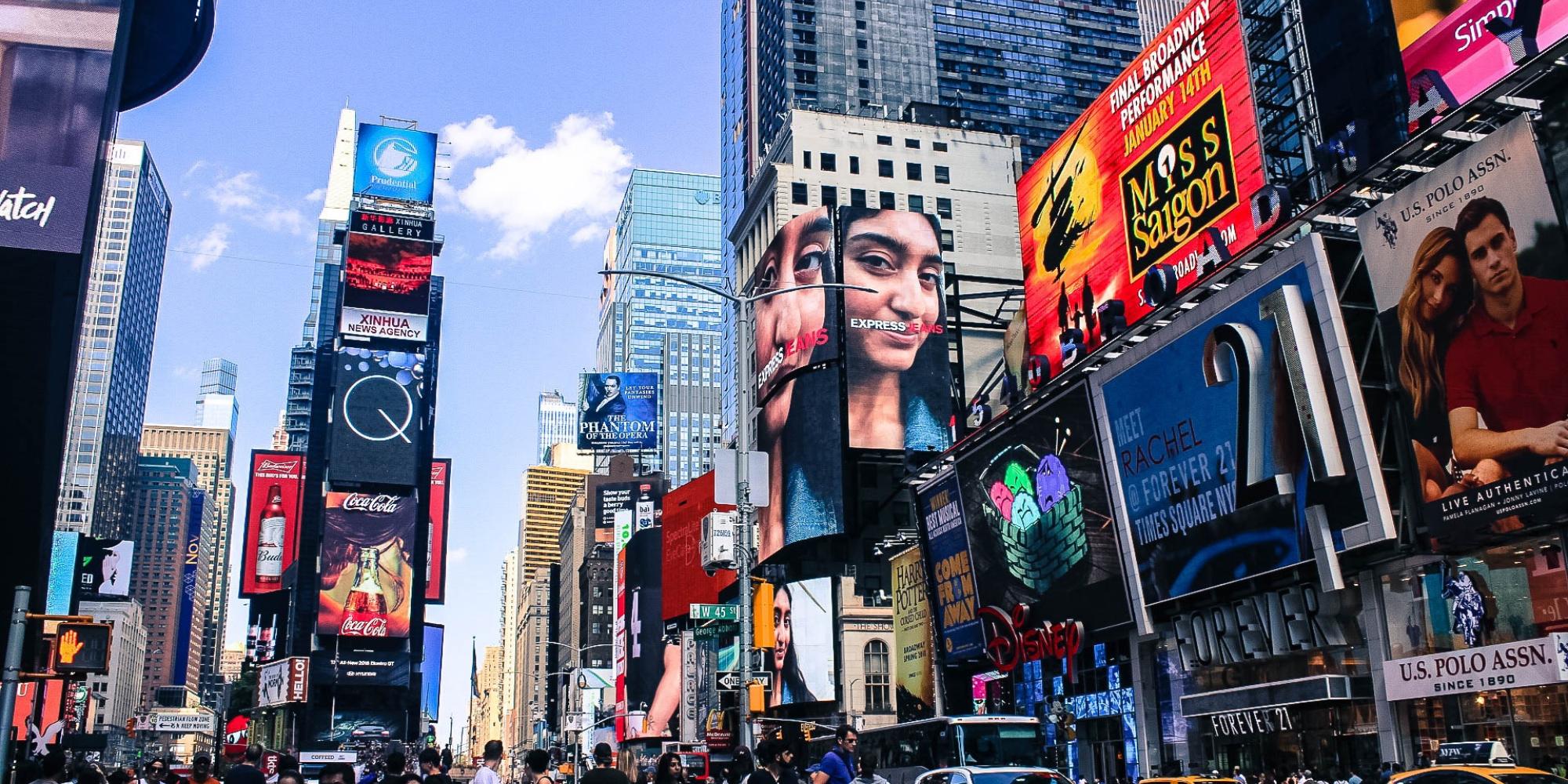
What is DOOH Advertising?
Advertisement collaterals have been around for centuries – we see them everywhere, from large posters mounted from the top of tall buildings to billboards we see as we drive down the highway. Categorized as out-of-home (OOH) advertising, these collaterals have always been an effective medium for brands to capture audiences and promote their products and services.
Since the advent of technology, OOH advertising has evolved to become more advanced and commensurate with the times. Hence the development of its modern alternative, digital out-of-home (DOOH) advertising.
What is Digital Out-of-Home (DOOH) Advertising?
Digital out-of-home (DOOH) advertising originated from the traditional OOH, which basically covered any form of advertising media that is found outside of the home, from billboards to posters, both big and small.
OOH primarily used static printed signage, which has become less effective but more costly over the years. That’s why companies are beginning to explore a modern take on traditional advertising methods, now focusing on DOOH advertising.
DOOH takes the essence of OOH advertising, except it replaces the use of printed signage with digital signage solutions. It keeps up with modern times and adopts technological advancements to create more engaging ads and boost impressions.
DOOH explores programmatic technology, allowing it to utilize advanced strategies like targeting and measurement to yield the best results in outdoor advertising.
The Power of DOOH in Advertising
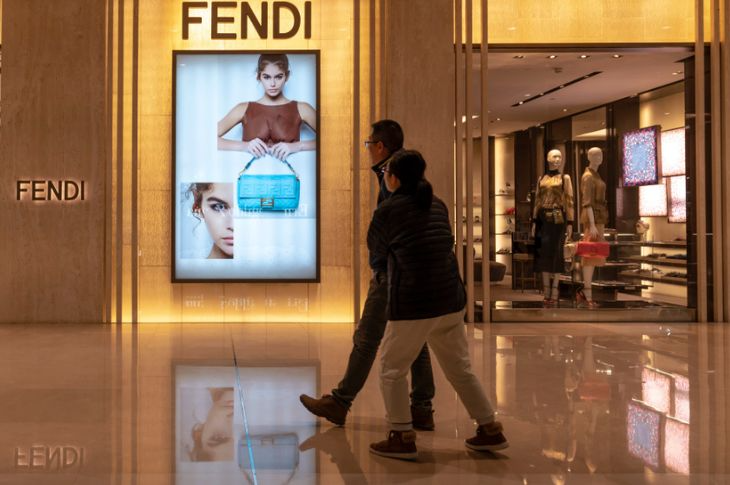
The average American sees about 4,000 to 10,000 ads per day! With this volume, it’s important that brands create eye-catching content that stands out and grabs their viewers’ attention within seconds. That’s where the specialty of DOOH advertising lies.
With the use of dynamic displays and captivating images or videos, DOOH signage can easily attract the intended audience. Couple that with programmatic technology and targeting features, and it creates a fully immersive experience that pushes potential customers further down the sales funnel.
According to research, 98% of consumers visit at least one DOOH venue within 30 days, which shows just how much it intersects with our daily lives.
In a complementary study by Yahoo, it was found that DOOH advertising yielded stronger brand recall and drove an increase in sales. 63% of respondents recalled content from DOOH screens they were exposed to, while 56% ended up purchasing an item endorsed in a DOOH display.
Proven by these statistics, DOOH advertising is an effective medium for brands to promote their products and services, allowing them to reach a wider audience and motivate them to act.
Problems with DOOH
While DOOH is revolutionizing the advertising industry, companies that have adopted it are seeing a couple of challenges that result from its advanced nature and use of high-scale tech.
Challenging Ad Targeting, Measurement, & Attribution
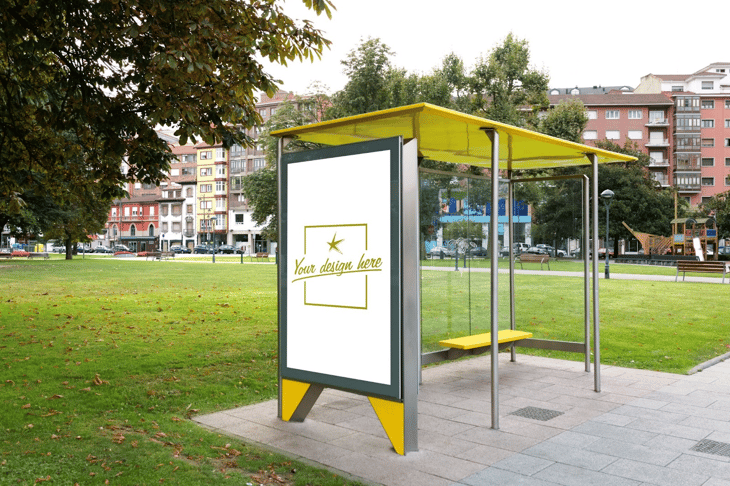
The nature of DOOH makes it so that the installation can only be seen by someone who is out of their home. They are physical advertisement solutions that are less personalized than ads that you would see on social media, for example. Instead, they are shown in a public spot to a general, mass audience.
This makes individual ad targeting and measuring results hard to achieve. The compromise is to instead target a certain demographic at a certain time of day and measure the success of a DOOH screen by comparing impressions with conversions.
While this is a significant challenge, DOOH is consistently evolving and improving. That means we may see improvements in targeting and attribution in the next couple of years.
Different Pricing Models
DOOH pricing is unique to other online ads that use the cost-per-mille (CPM) pricing method. This is not applicable to DOOH advertising because of its programmatic ad-buying landscape.
Advertisers will have to convert CPM prices into other pricing models compatible with DOOH, such as:
- Share of Voice - charges a set percentage of the ad inventory of a digital display network.
- Loop Frequency - charges for a single loop in multiple DOOH venues.
Hard-to-Measure Digital Impressions
Because DOOH screens are placed outdoors and are viewed by many people at any given time of day, it can be difficult to determine the exact number of impressions they receive. More often than not, advertisers can only get a ballpark figure of the estimated traffic in a particular DOOH location.
For example, people who are standing next to a screen don’t necessarily see the ad. But these numbers will be counted by mobile location data sources anyway. One way that advertisers are remedying this is by incorporating facial recognition technology into their screens to identify the viewer and their demographics. Although, this does bring up concerns about personal data privacy.
DOOH Venue Types
There are generally three formats and venue types where DOOH can be applied:
- Large format
- Place-based marketing
- Point-of-purchase screens
Large Format
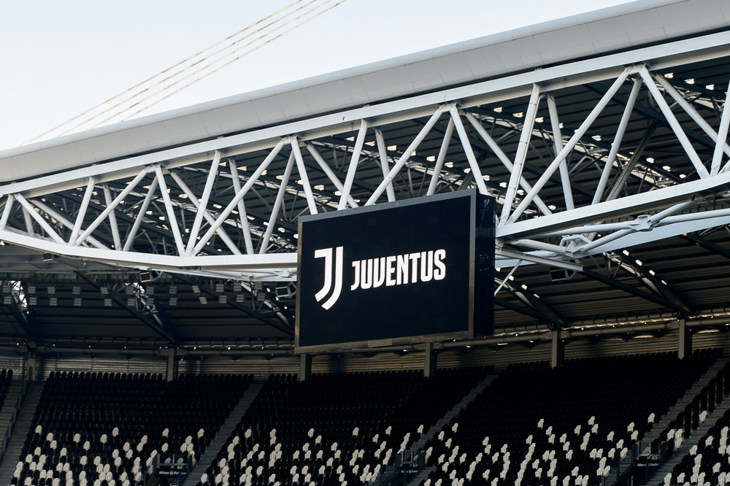
As its name implies, large-format DOOH is a large-scale installation that is usually targeted to the masses. They range from oversized billboards on highways to digital signage at bus stops.
Because of their application, large-format screens are usually targeted at people just going about their daily routines. Whether walking to their office or driving to work, they’re likely going to pass by and see a DOOH display.
Place-Based Marketing
While large-format DOOH focuses on targeting the general public, place-based marketing screens consider the context of their location. These installations are usually placed in environments that are contextually relevant to the ad content being shown.
For example, an ad about a new brand of exercise attire will likely be placed in a gym, while an ad promoting a vehicle repair service will find its spot in a gas station or auto body shop.
Place-based marketing DOOH then allows an ad campaign to target a specific audience persona and display the most relevant content to people who will likely be interested in it.
Point-of-Purchase
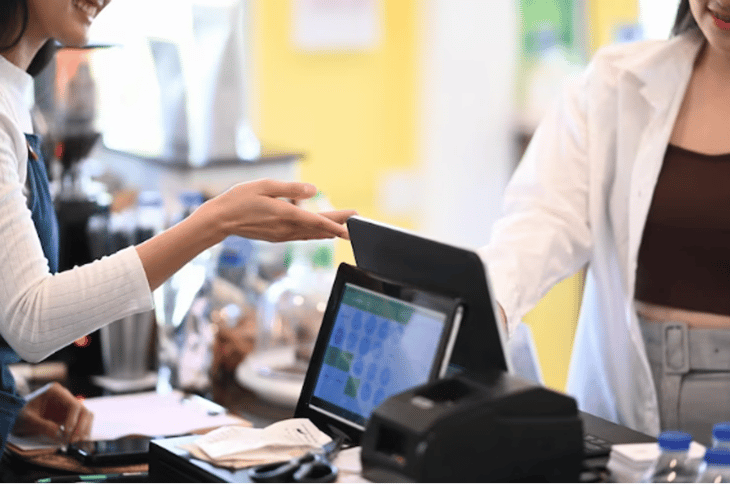
A point-of-purchase screen is a type of place-based marketing DOOH but goes a step further by showing ads at the point when the viewer is ready to make a purchase. It facilitates last-minute purchasing decisions, often placed inside stores near the checkout counter.
You’ll usually see these screens in retail shops, fast food chains, and grocery stores with the goal of getting the viewer to purchase the product shown in the ad without having time to second guess. This is why it works well for products that are usually purchased unplanned, such as medicine or liquor.
Evolution of DOOH Advertising
In the last decade, DOOH was largely limited in scope, only going as far as converting printed traditional ads into digital ones. But as companies strived to meet the demands of the digital era, so has the technology used in DOOH advertising.
Now, we’re seeing developments in the technology, from automation and centralization to deploying ads and measuring success in real-time.
Centralization and Automation
DOOH has become quite easy for advertisers to manage, with the emergence of platforms that allow them to plan, optimize, and schedule different campaigns in a single location. These processes can also be automated within these platforms, saving advertisers crucial time and resources and streamlining advertising campaigns.
Easy Content Deployment and Measurement
DOOH software and programs are making it easy for advertisers to launch ad content into screens quickly and efficiently. With just a couple of clicks, they can change and update content in real-time, even with multiple displays spanning a broad area.
Measuring the success of these ad campaigns has also never been easier, with software that gives advertisers data at a moment’s notice that can impact their decision-making and help them maximize their strategies for the best conversions.
How to Maximize DOOH Advertising
DOOH advertising presents businesses with opportunities never before seen with traditional OOH. In order to fully maximize it, you need to take advantage of its features that help you create effective ads and yield the best results.
Dynamic Content
DOOH is a step ahead of traditional OOH, giving brands more leeway to get creative and show dynamic media. They should take advantage of this and switch out static images with moving elements, such as video, GIFs, live streams, or animations.
Digital screens can support a broad range of media and widgets. As such, businesses should think out of the box and deploy content that catches attention and converts.
Interactive Screens
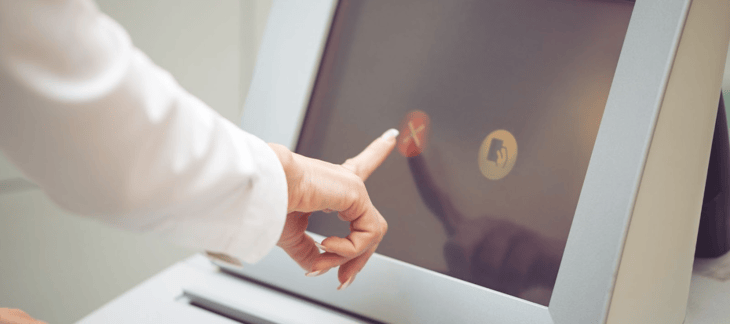
Aside from its ability to support more dynamic media types, DOOH also uses interactive technology that can take user engagement to the next level. Touchscreen displays allow viewers to pave their own journeys, exploring the screen’s different widgets and switching content types to satisfy their curiosity or interest.
Interactive screens also provide you with unprecedented data that can help improve your campaign. Things like dwell time and specific actions on-screen identify what users are looking for and what type of content they’re engaging the most with.
Mobile Extensions
DOOH screens are not the end game of your advertising strategies. Instead, you can make them the initial touchpoint of your interactions with customers.
An ad that you show can have the sole purpose of attracting your target audience and keeping them interested. And then you can nurture that initial engagement with personalized mobile messaging or QR codes that support your call to action.
First-Party Data
First-party data, or information a company collects from its customers, has long been utilized in online advertising to find the right audience and reach them across different platforms. But its use proved to be difficult to extend to DOOH — until now.
Technologies have been developed to allow companies to use first-party consumer data to create content that keeps their audience engaged in a physical setting. This data can shape decisions about content types and designs to yield campaigns that potential consumers will interact with.
Mobile Retargeting

DOOH can help brands engage with customers at multiple touchpoints. Though the screen itself does not render personalized ads, it does provide the opportunity for mobile retargeting.
Advertisers can utilize strategies like geofencing that uses GPS or RFID technology to determine if a mobile device leaves the DOOH venue. And the moment they do, it triggers a personalized message to send to their phones, effectively supplying the initial interaction with a more personalized approach.
Programmatic Advertising
DOOH primarily makes use of programmatic technology that allows advertisers to set parameters for their campaigns. It’s incredibly easy to utilize too, only requiring the input of campaign requirements like creative assets, budget, and target audience, among others.
A DSP software will use this data to determine the best audience for a given campaign and trigger specific content to show up at the right time for maximum visibility and engagement.
Targeting Capabilities
DOOH may not be able to target specific individuals to whom an ad campaign may be most relevant. But it does feature programmatic technology that can help advertisers optimize their displays to show ads at different times of the day, at certain environmental conditions, or according to unique consumer movements and behaviors.
With a strong understanding of your target market, you can program your display to show content when your audience is most likely to see it.
Weather-Based Marketing
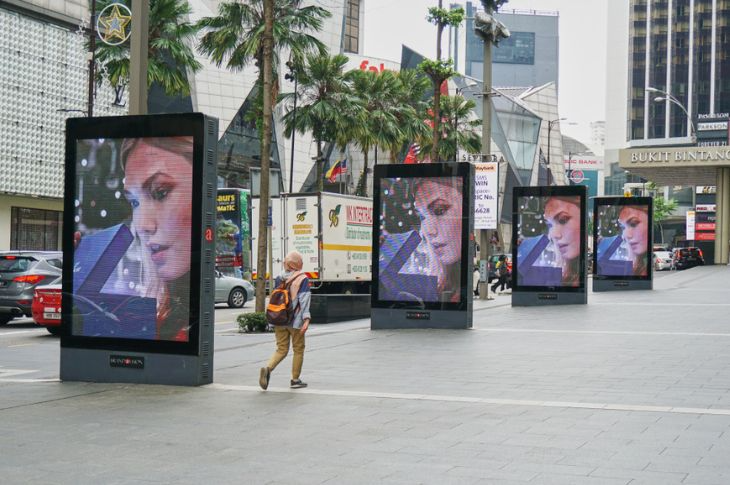
One of the unique features of programmatic DOOH is its ability to trigger specific ad campaigns based on environmental conditions. Screens can be programmed to detect UV indexes, storms, rain, or outdoor temperatures and show content that is contextually relevant to the weather.
For example, an ad about ice cream can be programmed to show up when the screen detects the temperature outside to be 100°F. Or an umbrella manufacturer can promote their products on screen when it detects heavy rain.
The Future of DOOH
DOOH has revolutionized the way businesses market themselves and their offers, changing static displays to dynamic and interactive screens that are hard to miss. With engaging content that catches your audience’s eyes and keeps them engaged, you benefit from more visibility and better conversions.
Coupled with advanced features that can maximize your campaign targeting and measurement, DOOH is an effective and impactful solution to modern-day advertising. And the technology is only going to get better from here, with the DOOH market expected to grow by an annual rate of 10.35% through 2026.
Interested in exploring DOOH for your business with digital signage? Book a free demo with Rise Vision now!
More From Our Blog
-

Screen Sharing for Workplace Collaboration | Rise Vision
Screen-sharing technology has transformed how teams communicate and work together in real-time, regardless of their location. It can make presentations more engaging, support remote work, and speed[…]
Read More -

How to Use PowerPoint for Digital Signage
To create stunning, attention-grabbing, and effective digital signage content, you need the help of content creation and presentation tools. One of the most popular is Microsoft PowerPoint, owing to[…]
Read More -

120 Digital Signage Content Ideas
So…. you decided you would invest in some digital signage software and you need some ideas for ways you can make it stand out. This article is your go-to source for the best digital signage content[…]
Read More
Keep Your Displays Interesting – Pick New Templates Every Week!
Every week, we send template recommendations that will make you look great and improve your audience experience. And the best part, they save up to 16 hours of content creation time every week!
12,300+ Organizations Trust Rise Vision, You Can Too
Schedule a Free Demo
You deserve the #1 all-in-one platform for digital signage, screen sharing, and emergency alerts.



































